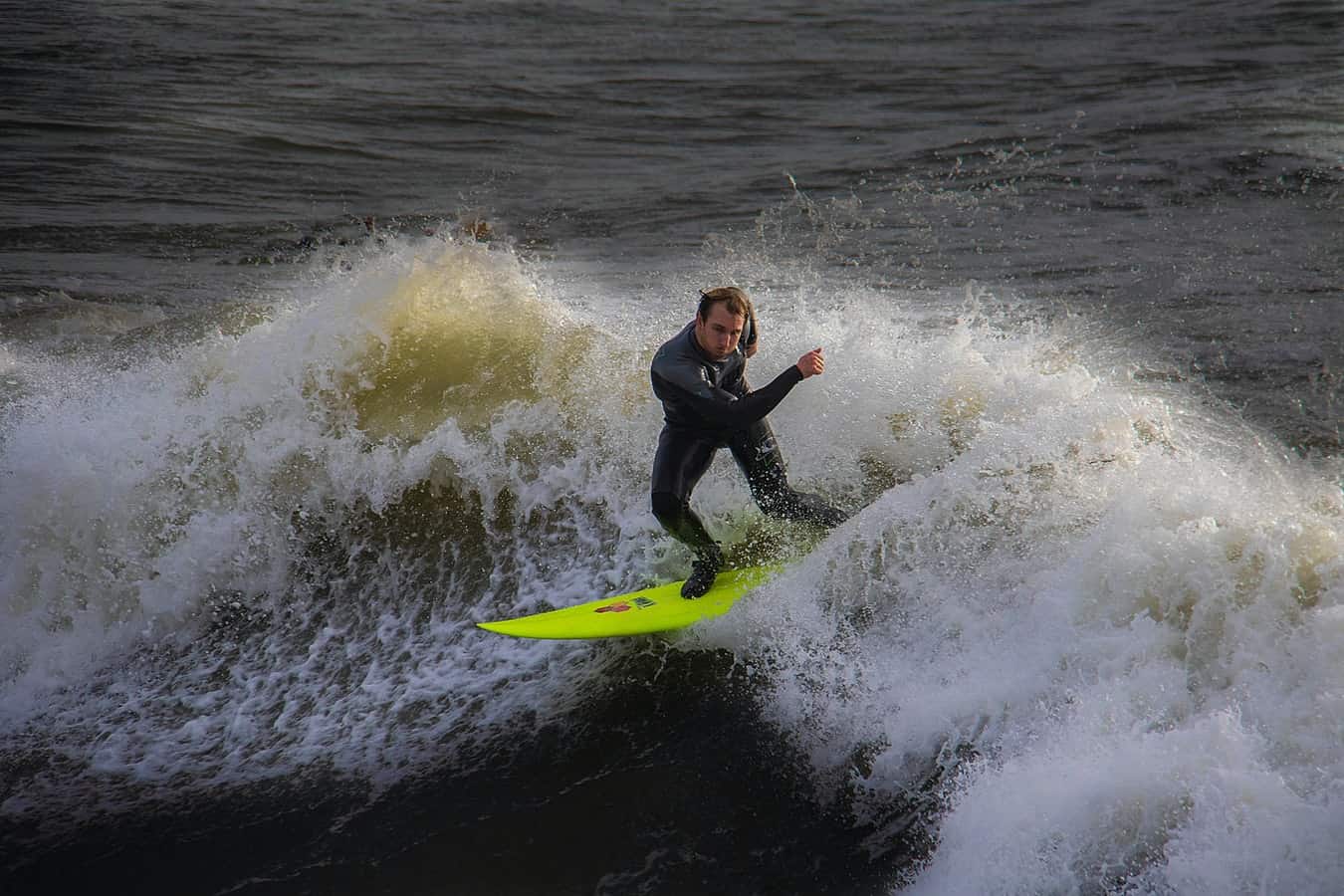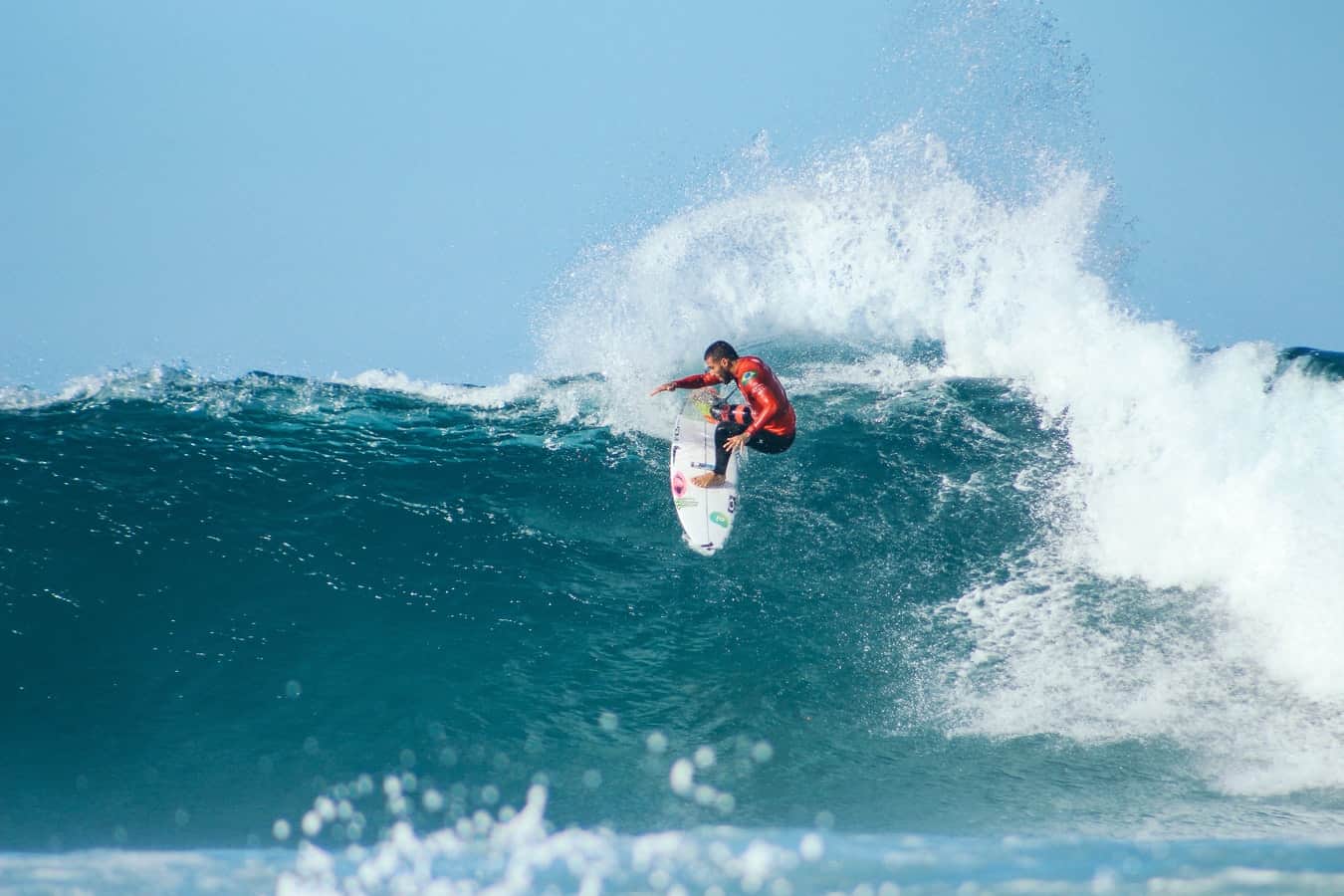Lots of surfers dream of becoming professionals. To attain the highest level, you’ve got to be incredibly good. The World Surf League is the governing body for professional surfers and sponsors events each year for pros to compete in. However, you can’t compete if you don’t qualify. Prizes are offered at the events but the road there for a lot of surfers can be costly, including the cost of flying to compete in events as well as personal equipment.
Do pro surfers pay for their own surfboards? The answer depends on your ranking and whether you have sponsorships. Most pro surfers in the lower ranks pay for their own surfboards.
Can Professional Surfers Earn A Living By Competing?
It’s estimated that a pro surfer will invest over $50,000.00 for his chance to compete in any of the competitions sponsored by either the Association of Surfing Professionals, the World Qualifying Series, or the World Surf League. If you win competitions and become a renowned surfer, then the cost was worth it. However, very few surfers reach the highest pinnacle.
Currently, there are no more than 2,000 surfers in the world that compete on the professional circuit. Out of these, it’s estimated that about 5% can earn a full time living by competing internationally. One of the reasons is the mere cost of competing.
However, those at the elite level will receive endorsements and frequently, these sponsors will pay for equipment, transportation, and hotel accommodations. Often, because surfers want to prepare and get to know the waves and to be better acclimated to the surf, many pros will rent apartments or some other kind of lodging.

Surfers at the top of the list, the “elite surfers,” can earn millions from a combination of competition prizes, endorsements, and sponsorships. Jordy Smith, one of the world’s most successful surfers, won over $2 million in a single year.
Elite surfers are given lots of equipment as well, and it’s ironic that this happens, because the pros at the top, the ones who can easily afford the equipment, don’t have to buy surfboards, wax, leashes, or wetsuits; nor do they have to pay for airline flights to whatever destination they’re competing at.
There are 2 tiers, or levels, at which pro surfers compete. The top tier is the World Championship Tour (WCT), consisting of about 15 events each year. Only about 60 to 70 surfers qualify for the $100,000 purse paid for winning an event in any given year.
The World Qualifying Series, o WQS, is a bigger tour that is open to all surfers. Surfers in the second tier competition to win a spot on the Championship Tour by the end of each year.
The WQS is like what the minor leagues in baseball are to the major leagues. Surfers in the WQS complete to gain enough points to capture one of 16 spots by the end of the year. It is a tough place to be, only the top 8 results are used to score a surfer’s performance. But only 3 of these 8 scores are allowed from his home territory. The WQS only allows 3 scores from home to eliminate a surfer’s hometown advantage.
The difficult part is that to get the other 5 top scores, surfers have to travel to other places in their country of origin, and around the world. Usually, this requires an investment for travel, equipment, and accommodations, which limits the number of surfers who can compete and is based on their ability to afford to compete.
Any surfer who lands in the top 16 spots in the world is allowed to compete on the prized World Championship Tour. Here they can get a shot at the title of the best surfer in the world.
What Is The Average Salary Of A Professional Surfer?
The top 44 ranking surfers will each earn $3,000.00 per event; for 12 events, that calculates to $36,000.00. If a WCT surfer wins 2 events only, he can earn over $100,000.00, when including the $36,000.00 by ending up in the top 44.
Pro surfers can’t count on prize money, though, because there is no guarantee he’ll win 2 events. This is where endorsements become so important.
Surfers have managers who contact clothing companies, makers of shoes, wetsuits, surfboards and even sunglass manufacturers, for endorsements. These companies will often give a pro surfer the equipment he needs to compete, saving him up to $10,000.00
Endorsements can often last for years, meaning that in each of the years of the endorsement contract, a pro surfer can expect a guaranteed income. Surfers want to reach this level, and it can be safe to say that he or she can earn deep into 6-figure territory during each year of the contract with the manufacturer.
Surfboard manufacturer’s endorsement money is low compared to the endorsement money a clothing maker pays. However, in exchange, a prop surfer gets a free supply of surfboards from the surfboard endorsement. At $400.00 per surfboard, pros save money on the cost of the boards.
A surfer who is very, very good and qualifies in the top 100 surfers in the world (out of a pool of 1 to 2 thousand competing pro surfers, can make about $60,000.00 per year, without endorsements. But he or she will need to pay for his or her surfboards, equipment, travel expenses, and hotel stays.
Surf enthusiasts will need to make a decision when they become good enough to try out for World Surf League events. Qualifying comes at a cost – surfers should expect to pay from $50,000.00 $80.000 to fulfill the requirements for travel and equipment.

Does Social Media Help Surfers Establish Recognition?
The answer is, definitely yes! Social media is a free tool that surfers even 20 years ago didn’t have. Making a social media presence and getting followers can only help a surfer aspiring to make the top tier of surfers in the world.
If a surfer garners over a million followers, he or she now has name recognition. Companies that will pay endorsements like this because a surfer who is already known by consumers will help the company sell more of whatever product they’re marketing.
Let us say a talented female surfer is in the World Qualifying Series and she wants to compete among the elite in the World Championship Tour. She starts an account online with Instagram and posts pictures of herself with a surfboard, or surfing the waves, and shares her experiences. If she presents an appealing image, she will begin to get followers, and over perhaps a year, she may bring her number of followers into the hundreds of thousands, even millions.
She finally qualified for the World Tour and has invested all of her time and a lot of money – perhaps over $50,000.00. She hires a manager who reaches out to companies who sell clothes or surfboards or wetsuits. The manager attaches her Instagram profile. The company sees all the followers she has and how good the pictures she posted look.
They create a story around her and offer to pay her expenses to compete. This lightens her load in terms of the money she will need to payout. Pro surfers can go through 30 to 40 surfboards every year, but now, a surfboard manufacturer has provided all the boards she needs to compete.
Her endorsement income rose from nothing to over $100,000.00 because she created a social media account, practically free, and built up a reputation outside the surfing circuit. Her chances of succeeding and winning, with all the extra support from her fans, will increase greatly.
Surfers who play it right, take advantage of all the free self-promotion options they have, who practice surfing all the time (to the exclusion of everything else), hire a manager and get endorsements and sponsorship, can enjoy years of high income.
Related Questions
Who Are The Highest Paid Pro Surfers?
Of the top 10, only one, Stephanie Gilmore, is female.
John Florence far and away tops the list. Last year he made about $5.5 million from a combination of prize winnings and endorsements. But the best part of his earnings is a deal with Nike that will pay him a whopping $30 million over 8 years. This is a guaranteed income of over $4 million every year for 8 years.
Gabriel Medina is next, whose earnings last year were over 3 and a half million dollars. His prize winnings totaled $475 thousand, but his endorsements total over 3 million dollars. Surfers know the biggest money is in endorsements and work hard to get them.
The third highest is Julian Wilson, whose earnings last year were just shy of $3 million.
How Long Does It Take To Compete Professionally?
Some pro surfers were born with remarkable athletic talent and did well in any of the sports they pursued before they started to surf. Surfers with a lifetime of athletics will likely reach the level of professionalism more quickly than someone who didn’t play a lot of sports in their adolescence and young adulthood.
Surfers go from good to great after years of training the body how to respond to waves, and how to paddle efficiently. This muscle memory can take years to develop and the surfer reaches a point where what he or she does is no longer on a conscious level. The body knows what to do on its own.
What Is The Best Way To Be The Best At Surfing?
Like anything you get good at in life, the best way to be a great surfer is practice. Spend long hours in the water, take care of your surfboard by waxing it often, and learn to accept that not every day will be a good surfing day.
Try different waves. Challenge yourself often. When you’ve mastered whitewater, go to barrel waves. Then move to point breaks. Try to surf in all different conditions, from soft sea beds to rocky shorelines and surfing near piers. Travel to where big waves break, like Hawaii. Always try to move to the next challenge. Master each and then set your sights on turning pro.

